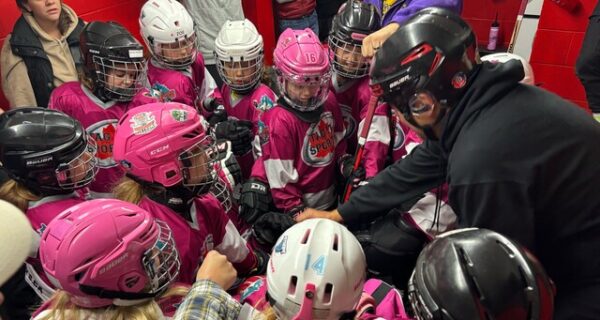Hockey isn’t played in a vacuum. Beyond pure talent and coaching, context, where a game is played, how many nights in a row players have been on the ice, and how gruelling a travel schedule has been, nudges outcomes in ways the market sometimes underweights.
For those who want an edge, understanding those nudges and folding them into models can turn a small informational advantage into consistent, accurate predictions.
Below is a practical deep dive into the major contextual factors, how they influence the game, and how to track and exploit them.
Measuring Home-Ice Impact on Odds
Home ice can influence several factors, such as lineup advantages (coaches get matchups), familiar practice routines, less travel fatigue and the intangible confidence of playing in front of your own fans.
Oddsmakers price home advantage into moneylines and totals, but not perfectly, especially in short markets (injury news, goalie starts, back-to-back situations).
How to use it: Don’t treat “home” as binary. Look at splits; a team that’s modestly above average at home but faces an opponent that’s road-weary or bad on back-to-backs can see an outsized edge. Similarly, aging teams with limited depth may post significantly worse road numbers late in the season.
Travel and Fatigue: What Lines Often Miss
Travel is the sneaky one. Two nights in a row in different time zones, long-haul flights, and compressed road trips accumulate micro-fatigue that affects decision-making, reaction time and, crucially, physical battles in the corners, those little plays that don’t always show up in raw shot counts but swing games.
Markets generally account for obvious travel (west-to-east coast trips, marquee back-to-backs), but they often underprice cumulative fatigue: long road trips that include multiple time-zone changes, or teams that have had several more miles logged than their opponent in the past 7–10 days.
A team landing late after a red-eye and playing the next afternoon, or one that has lost a day of practice, is more vulnerable than a static “road team” label suggests.
How to spot it: Track travel mileage and days off. Simple heuristics, like the number of time zones crossed in the last 72 hours, the number of games in the last 6 days, and whether the team had a day off between travel and game, correlate cleanly with outcomes in many datasets.
Back-to-Backs and Rest: Quantifying the Drag
Back-to-back nights are among the most important contexts to track. Coaches juggle minutes, rest key players, or roll out veterans who can still burn down the stretch; younger teams sometimes thrive on energy, older ones suffer on conditioning. The second night of a back-to-back is where injuries spike and shooting percentages regress toward the mean.
How to use it: Adjust models for off-night carryover; not just whether a team is on the second night, but who is likely to log the heavy minutes. If your lineup information suggests a team will sit its top forward or pull the starter, adjust accordingly. Also consider the opponent’s freshness: a rested underdog can be more dangerous if the favourite is on the tail end of a road grind.
Specials: Road-Trip Scheduling and Betting Opportunities
Road trips create patterns. Teams on long homestands tend to be rested and sharp. Those in the middle of long road trips, especially with uneven sleep logistics, are more susceptible to sloppy defensive coverage and poor special teams.
Conversely, road-trip fatigue can also reduce scoring variance, as coaches tighten structures, resulting in lower-scoring affairs.
Opportunities to hunt:
- Fade teams on the tail end of long Western road trips when they face fresh, structured home teams.
- Target totals on games where both teams are exhausted; scoring often dips and shootout reliance can spike.
- Look for spot betting on PK/PP when travel reduces tactical preparation. Special teams tend to be more volatile when practice time is limited.
Remember: The calendar matters. Midweek games after travel-heavy weekends are different beasts than early-week tilts after a day off.
Data Sources to Track These Trends
To act on context, you need data: schedules, travel logs, strength of rest, injury reports, and lineup sheets. Good starting points include:
- Official NHL schedule + team travel windows (to compute time-zone changes and days off).
- Game reports and lineups for confirmed scratches and goalie starts.
- Advanced shot and expected goals data from play-by-play providers (for home/away xG splits).
- Publicly available roster and age/depth metrics to weigh fatigue impact.
If you’re building a model, ingest the schedule and compute rolling metrics (games in the last 7 days, time zones crossed in the last 72 hours, days since last practice). Combine these with xG, scoring chance share and goaltender quality to produce a context-adjusted win probability.
For a step-by-step walkthrough on turning those data points into wagers, check out this NHL wager guide Canada.
Practical Betting Strategies
- Model first, adjust for context – Produce a baseline projection, then layer in modifiers for home, travel, back-to-backs and days off. The market is efficiently lazy: it often prices headline context but not the nuanced combination of multiple factors.
- Exploit totals and puck lines – Context frequently compresses margins. Fatigue reduces scoring variance, so totals and -1.5/-2.5 puck line swings can be profitable.
- Monitor lineups and morning goalkeeper news – A last-minute goalie change on the road or a confirmed scratch can flip the value drastically.
- Shop across books – Context-based bets often require small advantages; even a few cents difference on the moneyline or total can flip an edge to profit.
Closing: Context is Compounding Edge
Context won’t replace talent evaluation, but it compounds or erodes it. A deep model that ignores travel, rest and scheduling will be right often, but wrong at the worst times.
The smart edge in NHL betting comes from layering those contextual nudges onto your projection engine, staying disciplined about variance, and treating the schedule like another player on the roster. Get the small details right and the market’s small mispricings become yours.












